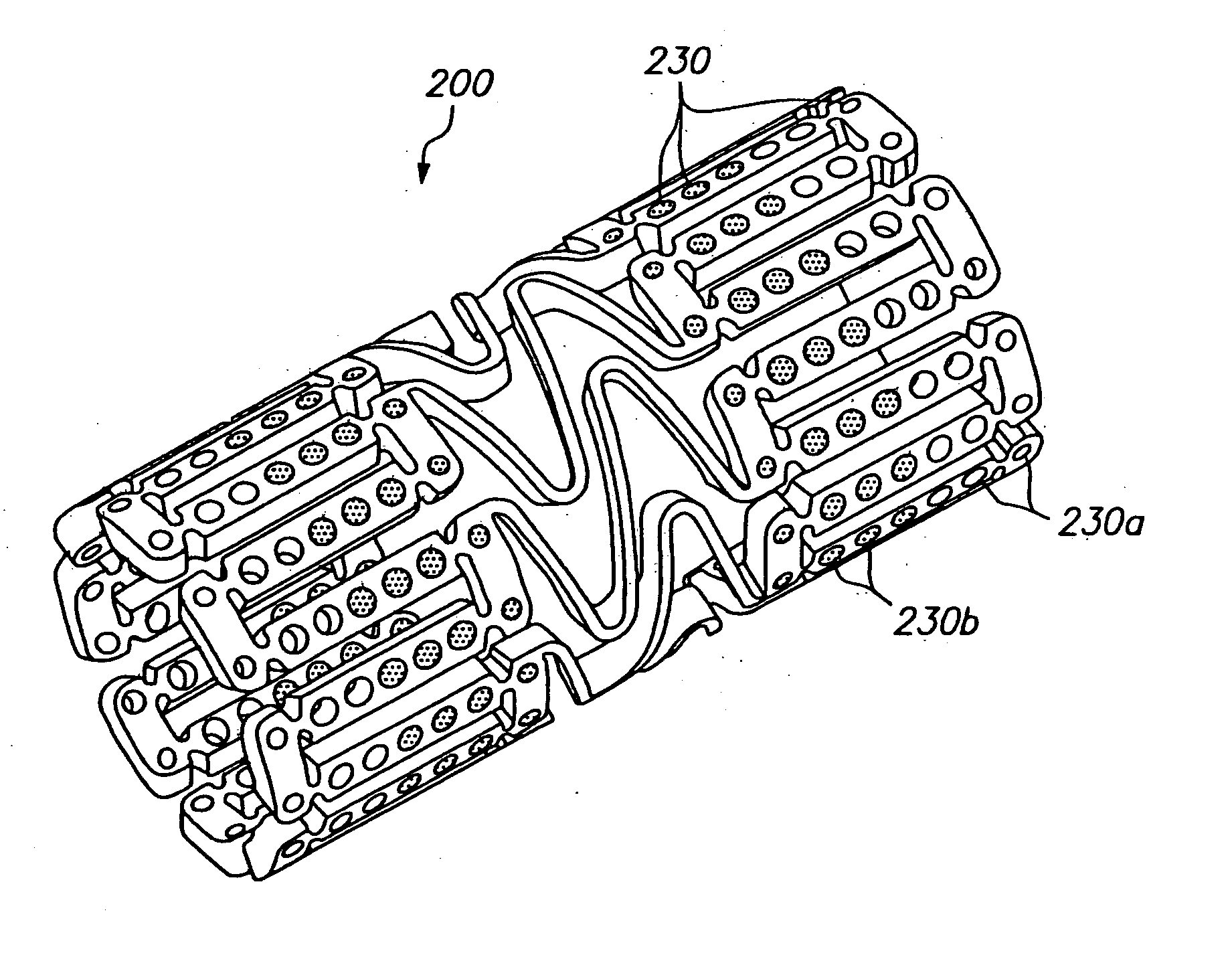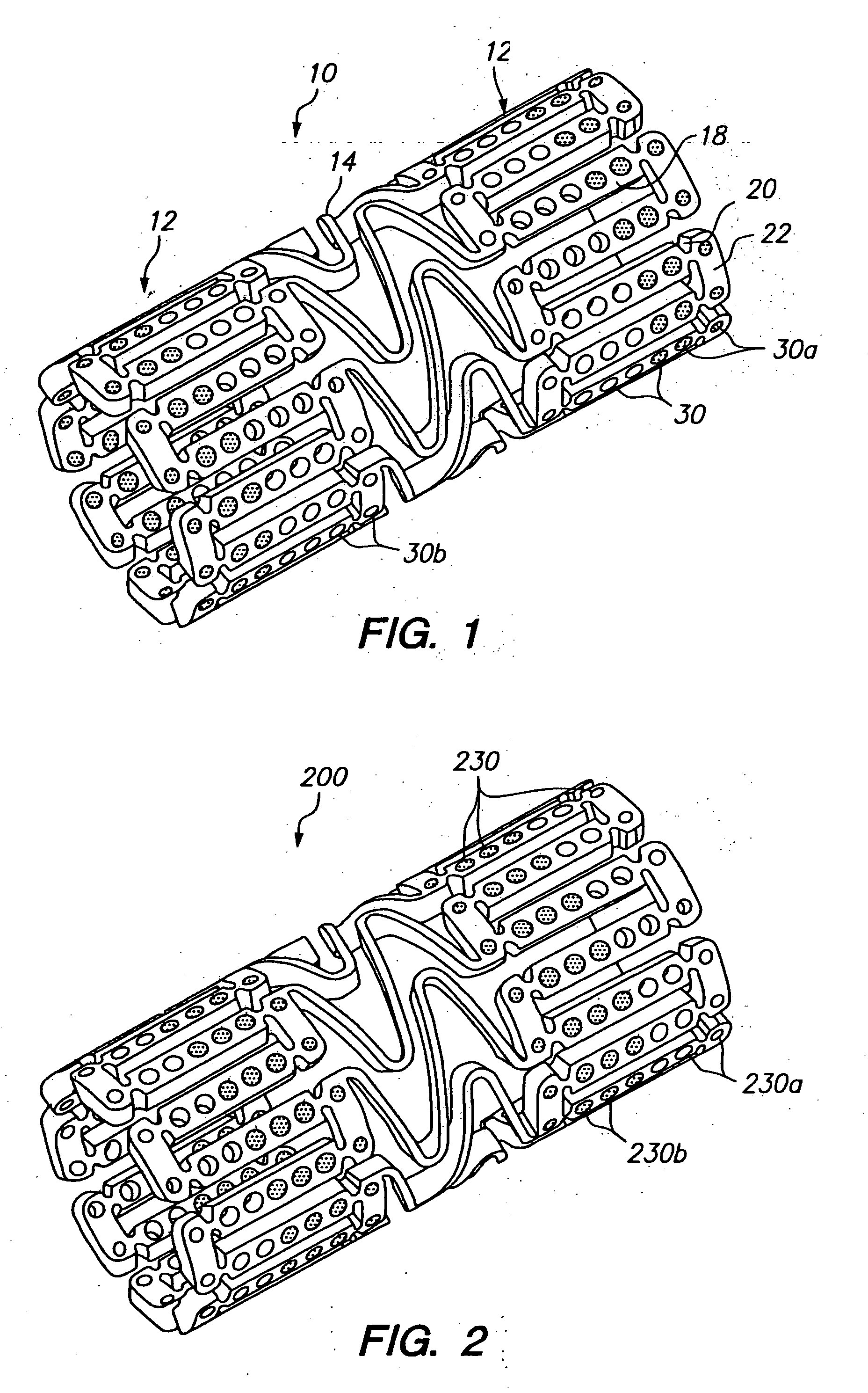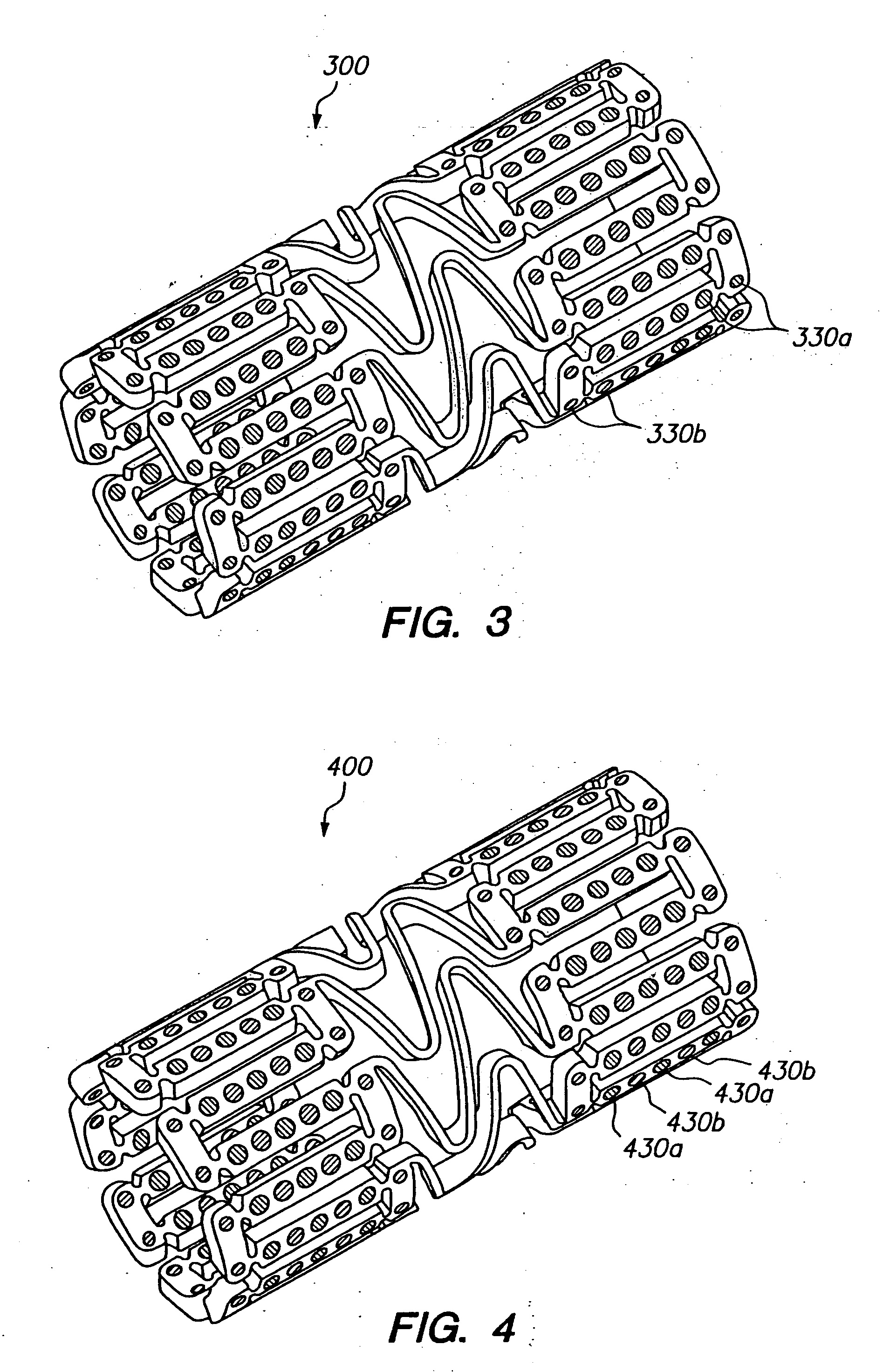Expandable medical device with openings for delivery of multiple beneficial agents
a medical device and beneficial agent technology, applied in the field of tissue-supporting medical devices, can solve the problems of increasing trauma and risk to patients, reducing the mechanical expansion properties of the stent, and increasing the volume of beneficial agents, so as to reduce reducing the effective wall thickness of the stent, and reducing the effect of stent mechanical expansion
- Summary
- Abstract
- Description
- Claims
- Application Information
AI Technical Summary
Benefits of technology
Problems solved by technology
Method used
Image
Examples
Embodiment Construction
[0033]FIG. 1 illustrates an expandable medical device having a plurality of holes containing a beneficial agent for delivery to tissue by the expandable medical device. The expandable medical device 10 shown in FIG. 1 is cut from a tube of material to form a cylindrical expandable device. The expandable medical device 10 includes a plurality of cylindrical sections 12 interconnected by a plurality of bridging elements 14. The bridging elements 14 allow the tissue supporting device to bend axially when passing through the torturous path of vasculature to a deployment site and allow the device to bend axially when necessary to match the curvature of a lumen to be supported. Each of the cylindrical tubes 12 is formed by a network of elongated struts 18 which are interconnected by ductile hinges 20 and circumferential struts 22. During expansion of the medical device 10 the ductile hinges 20 deform while the struts 18 are not deformed. Further details of one example of the expandable me...
PUM
 Login to View More
Login to View More Abstract
Description
Claims
Application Information
 Login to View More
Login to View More - R&D
- Intellectual Property
- Life Sciences
- Materials
- Tech Scout
- Unparalleled Data Quality
- Higher Quality Content
- 60% Fewer Hallucinations
Browse by: Latest US Patents, China's latest patents, Technical Efficacy Thesaurus, Application Domain, Technology Topic, Popular Technical Reports.
© 2025 PatSnap. All rights reserved.Legal|Privacy policy|Modern Slavery Act Transparency Statement|Sitemap|About US| Contact US: help@patsnap.com



